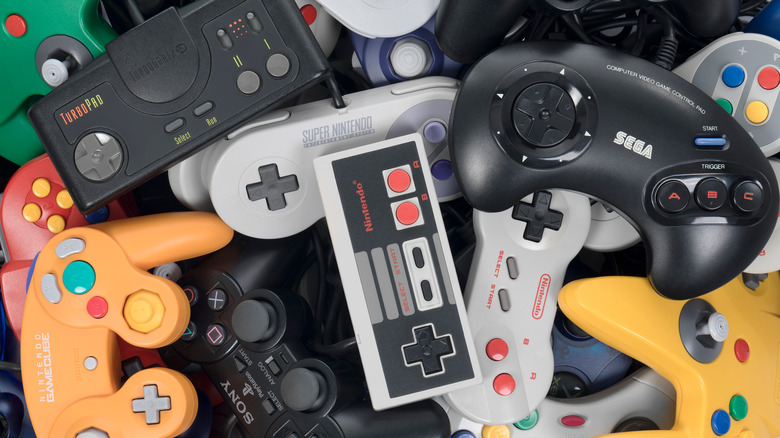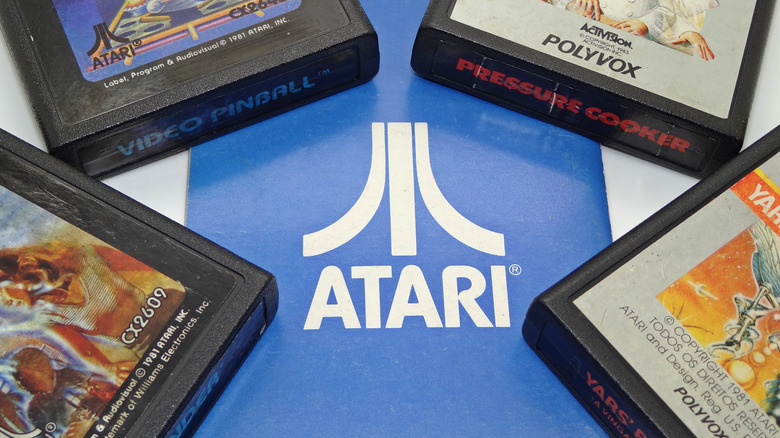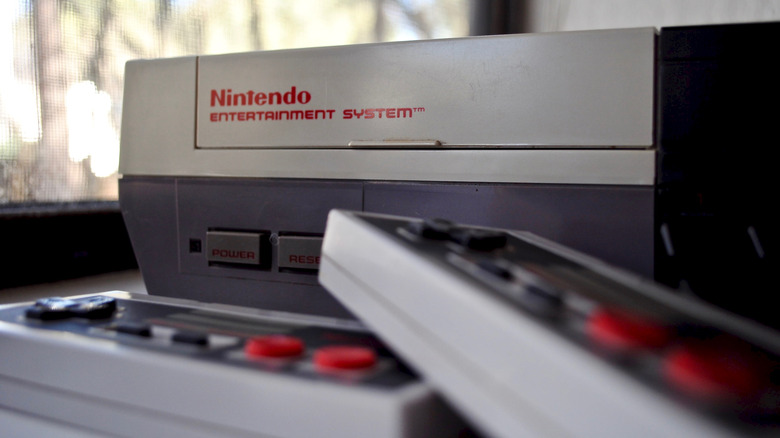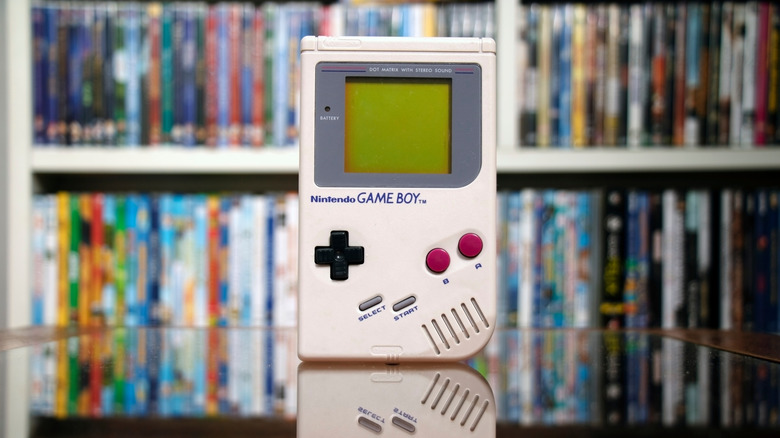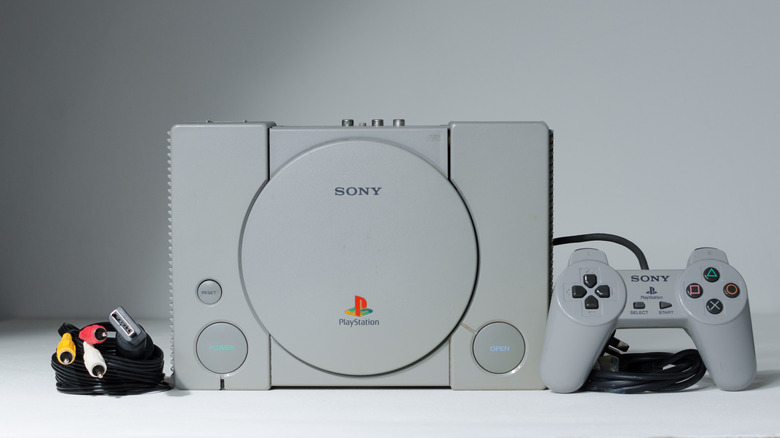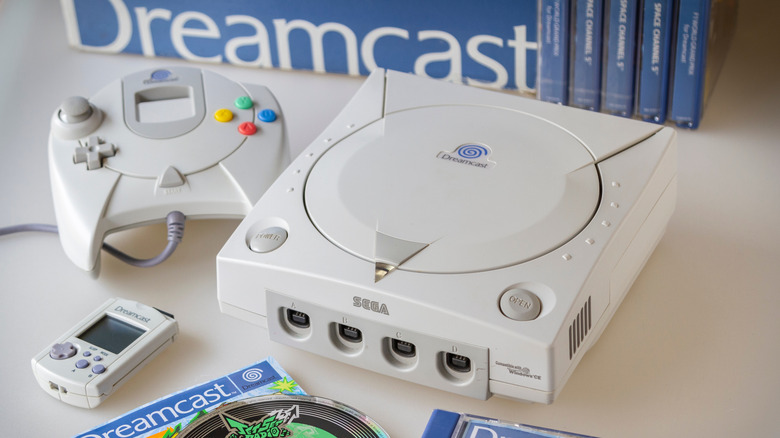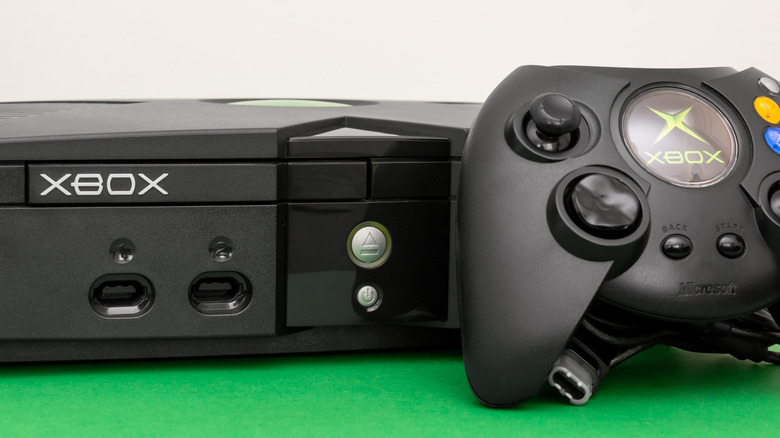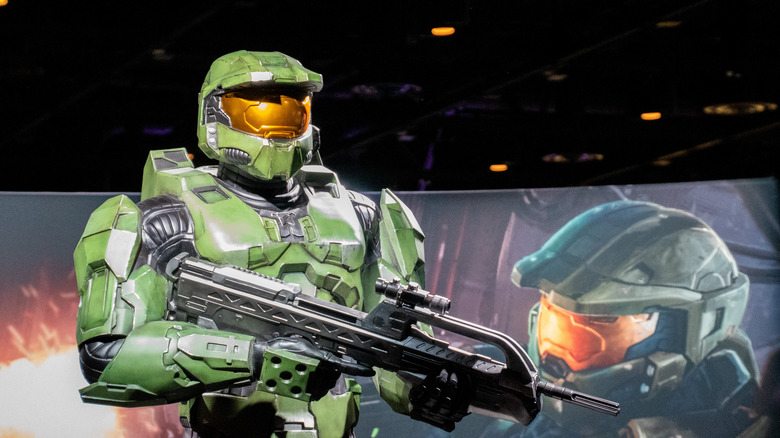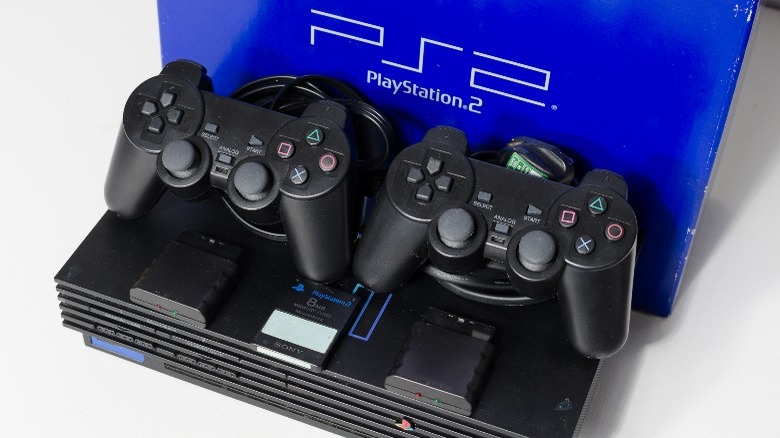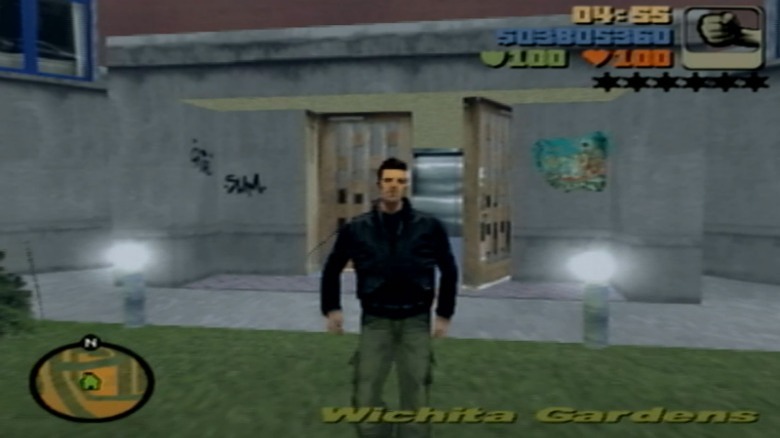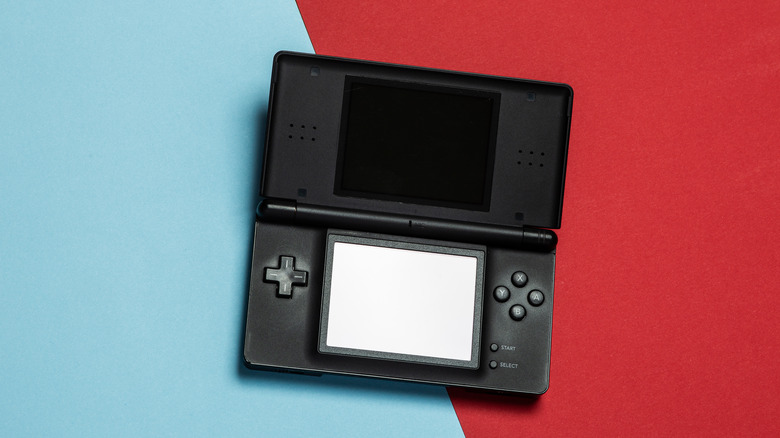The Best Game Console Launches Of All Time
Did you know the very first video game console ever made (initial prototype called "Brown Box") was the Magnavox Odyssey? It had a grand total of 6 games, most being some kind of variation of Pong (volleyball, handball, etc). The original testing of the Brown Box took place around 1967, while the first release of the Magnavox Odyssey occurred in 1972.
Fast forward a few years after the Magnavox Odyssey's launch, and Atari's Video Computer System (later called the Atari 2600) was revealed to the public. Featuring swappable cartridges that contained game ROMs, the Atari Video Computer System catapulted to success thanks to the classic "Space Invaders," which was one of the first video games to hit 1 million sales. Plus, with third-party companies making games for Atari, this was the perfect recipe for success.
To understand how the current console gaming market came to be, we're taking a peek at some of the biggest and best console launches in the category's short history. While Magnavox certainly made history as the first of its kind, the award for longest-lasting first-shot impact still has to go to Atari.
Atari VCS (Atari 2600) (1977)
In many ways, Atari's Video Computer System (VCS) was a true gaming console as, unlike the Odyssey, you could buy game cartridges to play on it and wasn't limited to the games it came preinstalled with. Atari's name remains inextricably tied to the launch of the at-home game console, even though the first wave didn't exactly stick around for long.
Atari's success was short-lived as the video game market experienced a massive crash in 1983, leading many console makers and game publishers to bankruptcy. According to the New York Times, video game sales tanked, dropping from $3 billion to just $100 million from 1982 to 1985. There were many reasons behind the crash, but the main cause was a flooded console and game market (many games were getting copies of copies) as well as the emergence of the home computer which could let you both work and play on just one system.
Few could predict that only 2 years later in 1985, the world would see one of the most influential and famous video game consoles of all time, courtesy of Nintendo.
Nintendo Entertainment System (1985)
Arguably the biggest, and most influential gaming console launch of all time was the Nintendo Entertainment System (known as Famicom in Japan). Its launch not only ended the first video game crash of 1983, it singlehandedly pushed Nintendo to stardom. Such was the power of the brand that Nintendo became an eponym for every game console from that point forward.
The Japanese video game giant made sure history didn't repeat itself with a saturated video game market with a tighter curation system. Any game published for the NES would need official brand approval for licensing — Nintendo also asked developers not to attempt to release more than 5 games per year.
While this was a good tactic, the games themselves were also key to its success. A strong launch lineup and the continued popularity of games coming out in later years is what pushed the NES to legendary status among video game consoles.
When the 1990s rolled in, Sega launched its Genesis console to compete with the NES, which boasted better hardware and better-looking games. To take the fight to Sega, Nintendo launched the Super Famicom or Super Nintendo Entertainment System, complete with upgraded hardware, and improved games (both in terms of gameplay and graphics). Nintendo's reputation and the games' popularity on the SNES helped it outsell the Sega Genesis, netting 49.10 million console sales vs the latter's 34.06 million through their lifetimes.
Just like with the SNES, Nintendo was looking to get a piece of that graphics pie by being the first to launch a 3D-capable gaming console. The Nintendo 64 was the company's first to feature 3D graphics, competing directly with the likes of Sony's PlayStation and Sega's Saturn. Unfortunately, it didn't end up selling as well as its Sony rival, coming in at 32.93 million units sold vs 102.49 million for the PlayStation.
Nintendo Game Boy (1989)
The Nintendo Game Boy was the first ever portable gaming console, a precursor to the likes of the PlayStation Portable and Nintendo Switch. Its success over the years prompted Nintendo to produce mobile platforms like the Nintendo DS and Nintendo Switch. According to VGChartz, the Nintendo DS and the Nintendo Game Boy still hold the second and third-place spots in the grand list of best-selling consoles of all time. Sony's PSP was also quite popular but didn't manage to reach the heights of its Nintendo counterpart.
Released back in 1989, the Game Boy competed with Sega Game Gear and Atari Lynx, both of which not only featured more powerful processors and displays, but they also had more features in general. However, despite being technically less impressive than its rivals (monochrome screen vs colored LCDs for example), Game Boy's optimized battery system outlived competitors quite easily, lasting 35 hours with rivals Atari Lynx and Sega Game Gear barely managing 4-6 hours.
At launch, the Game Boy came with "Tetris." This was the first time the game was featured on a commercially available mobile gaming console. Over time, "Tetris" sold over 35 million copies on Game Boy (after the initial launch bundling) and remains one of the most popular game franchises of all time. "Tetris" also demonstrated the Game Boy's Game Link Cable, allowing multiplayer action for the first time.
The Nintendo Game Boy also came with "Super Mario Land," which was also hugely popular as you could play Mario on the go on a much smaller device than the NES.
Sony PlayStation (1994)
Sony's foray into the console market wasn't pre-planned but happened thanks to Nintendo. Nintendo partnered with Sony in 1988 to develop a CD-ROM add-on called "Play Station" that'd connect to a Nintendo console. At the time, Sony wasn't even looking to enter the market on its own. However, when Nintendo canceled their partnership, going with Philips instead, Sony was out for blood and went ahead with the development of a standalone console with their own games.
With PlayStation (1994 in Japan, 1995 in North America), Sony focused on 3D game graphics processing, as inspired by the Japanese arcade success of Sega's Virtua Fighter. Due in at least part to the PlayStation's superior hardware capabilities, game developers and partnering brands jumped on the metaphorical bandwagon. PlayStation 1 was also one of the first successful CD-ROM featuring consoles, with rivals not even coming close.
As for its launch lineup, PlayStation 1 had "Ridge Racer," "Rayman," and "Street Fighter: The Movie" among others. However, what made it a major success was the games launched weeks, months, and years after the console's initial launch. Games like "Metal Gear," "Tomb Raider," "Final Fantasy VII," and "Gran Turismo" used the original PlayStation as a platform to launch decades-long franchises and household-name brands in their own right.
At the end of its lifecycle in 2006, Sony had sold over 102 million PlayStation 1 consoles, making the PS1 one of the best-selling consoles ever made.
Sega Dreamcast (1999)
After the success of Sony's PlayStation 1 and Nintendo 64, Sega had big shoes to fill, especially after the failure of its Saturn console which was way too expensive and didn't do well against its rivals. The Saturn not only cost $100 more than PlayStation 1 at launch ($400 vs $300), but Sega also fumbled its launch in North America. Sony launched PlayStation 1 later in a more polished state, cannibalizing Saturn's sales in the region.
The company had the right idea with Dreamcast, new and innovative tech (with some being ahead of its time), but at a more affordable price. Complete with a 56K dial-up modem for internet connectivity, the first console ever to feature one, it also featured GD-ROM which was something between CDs and DVDs making it more cost-effective than DVD-ROMs.
Dreamcast's online capabilities included being able to chat with other players, send emails and browse the internet. Sounds a lot like Xbox Live/PlayStation Network doesn't it? Sega was looking to build something similar but ended up segregating services to each region separately.
All that was left was a good launch lineup and Sega was set to take a chunk out of the Sony and Nintendo-dominated market. Its launch lineup included games like "Sonic Adventure," "Soul Calibur," and "Virtua Fighter 3," all three selling handsomely. Sonic is still well-loved by fans while "Soul Calibur" received multiple new entries over time and became a niche but great fighting game series.
On paper, Sega was doing everything right, but sadly, it didn't turn out so well and Dreamcast ended up a flop. Sega had to discontinue it just after two years thanks to Sony coming out with the PlayStation 2 and outdoing Dreamcast with better games, better graphics, reasonable pricing, and also offering online services.
Xbox (2001)
How do you enter a market dominated by two Japanese companies with an extensive lineup of games and great consoles to play them on? You play the long game and offer something they don't have.
Microsoft had become a big name in the PC market in the late 90s. Originally called the "DirectX Box," the company was looking to sell a PC dressed up as a gaming console with more power and flexibility than its competitors. Running Windows 2000, the new console was designed to be easier to work with for game developers as it was closer to a PC. Eventually, the name DirectX Box was replaced with just Xbox and Microsoft's new baby had a marketable name.
Now, what would Microsoft offer that Nintendo and Sony didn't have? Online multiplayer capability. Granted, both PlayStation 2 and Nintendo GameCube had internet connectivity but they were very limited and only let you chat or browse the internet at most. Microsoft's idea was to make an online gaming hub that not only lets you play with other people from across the country but also lets you download games and media directly to the Xbox without having to go out and buy a separate disc for everything.
All of this combined made for a compelling console offering from Microsoft. But as we'll learn more, it wasn't all sunshine and rainbows for the software giant.
Xbox continued: The Halo Effect
There's one key ingredient to making a console successful: great games. Microsoft knew this to be true and spared no effort in promoting its console at expos and events to attract game developers. One of them was Bungie, known these days for its work on the acclaimed Halo series and later developing "Destiny" and "Destiny 2." Back then, Microsoft acquired the studio for $30 million, and set it to work for its Xbox console. The studio's "Halo: Combat Evolved" was designed to fully utilize the console's capabilities, and was turned into a first-person shooter.
To say that it helped make Xbox a success is no understatement, as it was a great entry in the first-person genre's early years. After its launch, Xbox sold over 1 million units in just 3 weeks, despite its high (for the time) price tag of $299. Halo itself sold 1 million copies during the first few months of its release.
The console was a massive success in North America but didn't really catch on in Europe or Asia with low sales in both regions. To boost sales, Microsoft dropped the console's price from $299 to $199 in April 2002, meaning it lost money with every Xbox sold, but it did help put the console in more gamers' hands. The momentum dropped in the following years but with the launch of Halo 2 which sold more than 2.5 million units within 24 hours, the console got new wind in its sales.
Overall, Xbox managed to sell 24.65 million units, outselling console giant Nintendo's GameCube (21.74 million units), cementing its place among major console makers.
Sony PlayStation 2 (2000)
Released in 2000, PlayStation 2 followed up on the success of its predecessor, improving on it in terms of hardware and capabilities. The era of console-friendly 3D games began with the first PlayStation, but in the early days, the games didn't look all that great due to hardware limitations. With PS2's better hardware, developers could make much more visually impressive games, increasing the console's appeal.
Most importantly, it worked with a DVD-ROM drive and could pull double duty as a DVD video player which invited even non-gamers to purchase the console. PS2 was released at just the right time when people were starting to toss aside their VHS tapes and get into higher-quality movies and TV shows on DVD. The bigger storage space on DVDs also lets developers make the games bigger and better looking than before.
Another key advantage PlayStation 2 had was backward compatibility with the original PlayStation's games, giving it a large library at launch. Over twenty years later, the PS2 remains the best-selling gaming console in history.
PS2 continued: The biggest names in games
What made the PS2 triumph over Xbox was simple, games. Not only did the Japanese console have many more games available, but they also became fan favorites with some getting multiple entries during PS2's 13-year run.
Xbox had the advantage with online play, but that paled in comparison to the sheer volume of PS2's game library. It was home to "Grand Theft Auto" ("GTA III," "Vice City," and "San Andreas"), "Ratchet and Clank" ("Going Commando," "Up Your Arsenal," and "Ratchet: Deadlocked"), "Metal Gear Solid" (2 and 3), "God of War" (1 and 2), and so on. You can pick out heavy hitters from the beginning of PlayStation 2's launch, all the way to the console's last few years, and strike gold. Some became individual successes as well like "Silent Hill 2" and "Final Fantasy 10".
If you weren't into mainstream games, you could also play some lesser-known ones like "Beyond Good and Evil," "Manhunt," "Okami," "Ico," and "Gungrave" which had their own fan following. Several thousands of games were launched for the PlayStation 2 during its time, giving it an edge over other consoles.
The controller also hit the sweet spot as it was easy to hold and use, unlike the original Xbox controller which was too heavy. It didn't have a polarizing look — the console was simple, and the controllers were familiar. Since PS2, Sony has built up on the original design over the years with the PS3 and PS4 controllers not changing much.
Sony sold 158.7 million PlayStation 2 consoles overall, a figure which hasn't been beaten by any console since its discontinuation.
Nintendo DS (2004)
The only other portable console on this list, Nintendo DS (2004) outdid its rivals and secured its spot among best-selling consoles, second only to the legendary PlayStation 2. Going by the numbers, Nintendo sold 154.02 million units of the DS by 2022.
Succeeding its granddaddy Game Boy, DS featured two screens instead of one with touch capability and a stylus. Sony's offering, on the other hand, the PlayStation Portable, had more powerful hardware and could run PlayStation 2-level games easily. On paper, it seems like a win for Sony but Nintendo won the battle handily thanks to the secret ingredient we mentioned earlier, games.
Granted the PSP was home to more visually impressive games than the DS, but the latter flourished by not only offering a wider variety of games thanks to its unique interface, but it was also less expensive than the PSP, which made it much more enticing for casual gamers. There were quiz games that appealed to the older audience while pet simulators tickled the fancy of the tweens. It also had mystery games that let you pick your adventure in a written novel-like package.
This is exactly why DS was so successful, it marketed its games and features to the casual audience which was untapped by the hardcore gamer-focused Sony and Xbox. Over time Nintendo refined the design of the DS by making it thinner (DS Lite) and adding 3D capabilities (3DS) which also helped reach more potential buyers.
